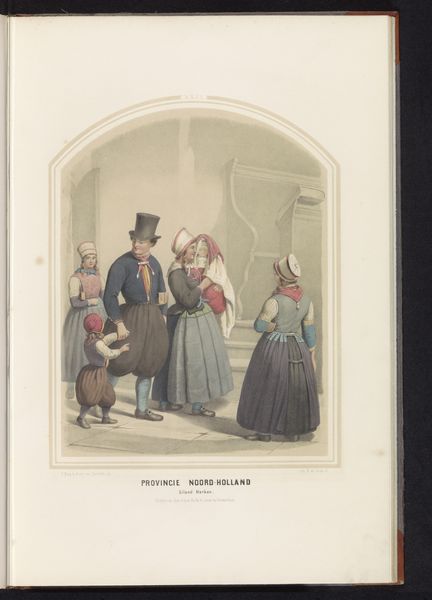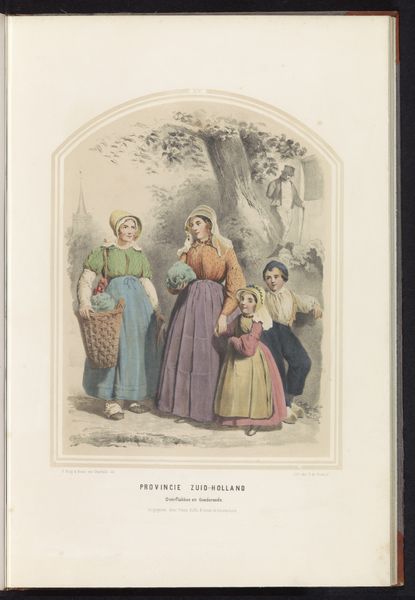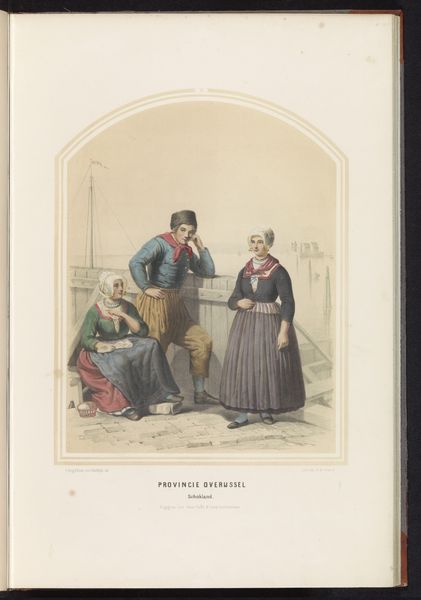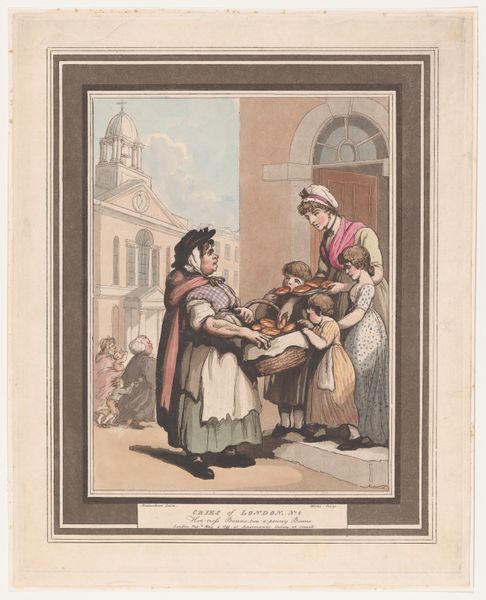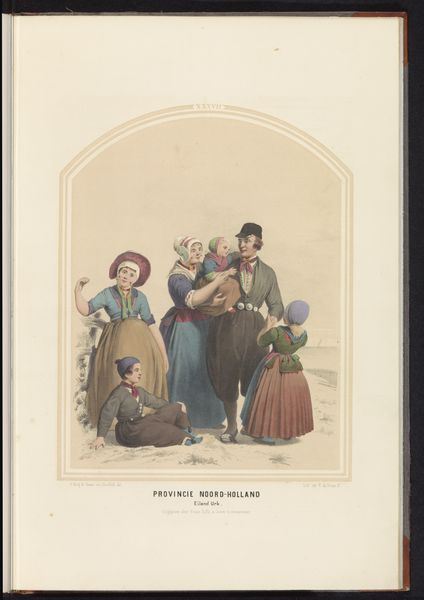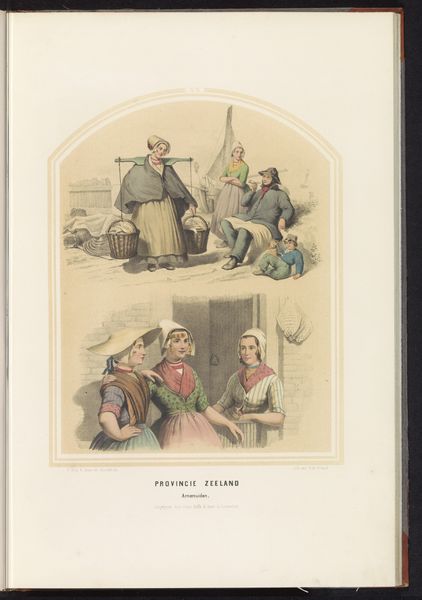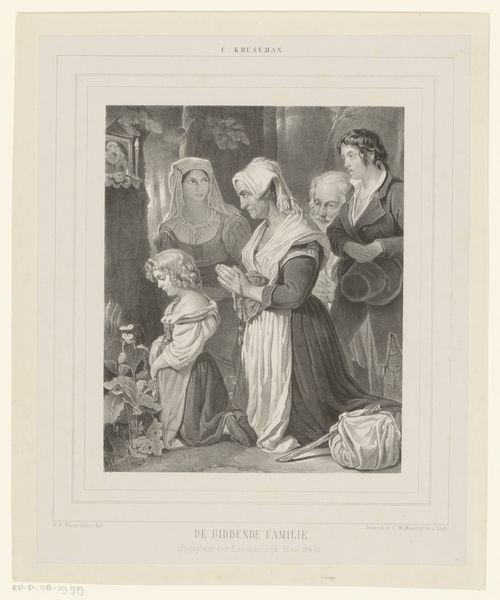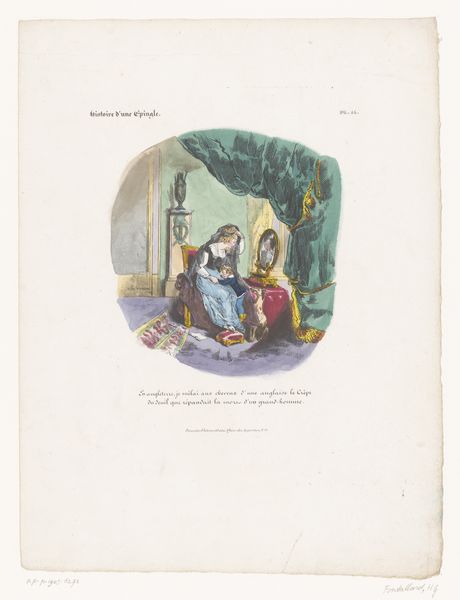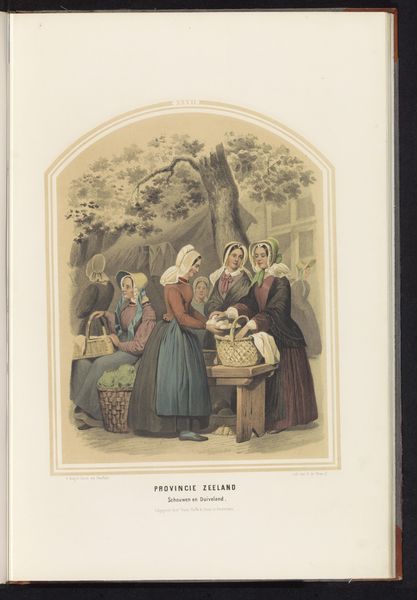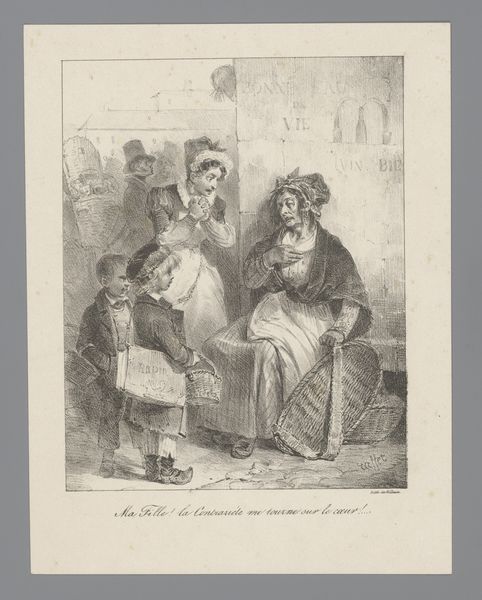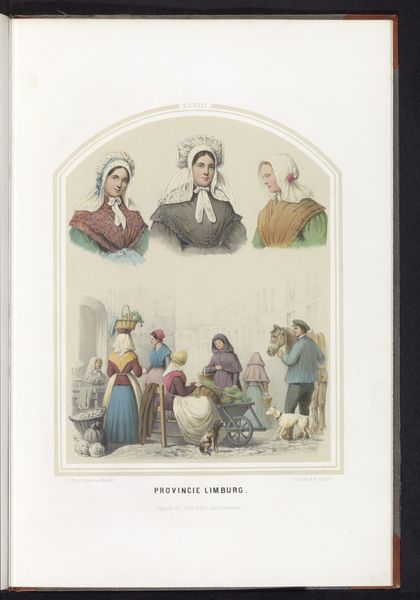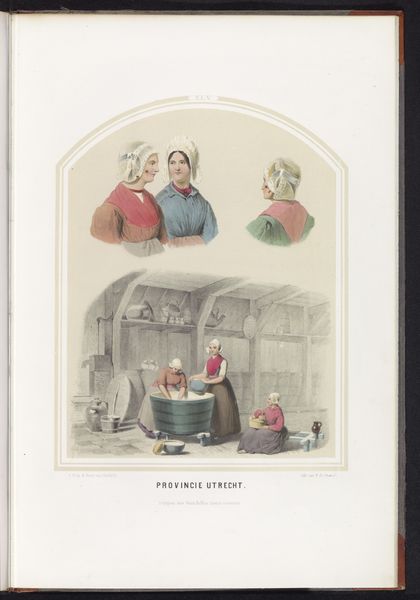
coloured-pencil, print
#
portrait
#
coloured-pencil
# print
#
caricature
#
coloured pencil
#
folk-art
#
watercolour illustration
#
genre-painting
#
history-painting
#
academic-art
#
realism
Dimensions: height 523 mm, width 350 mm
Copyright: Rijks Museum: Open Domain
Editor: This print from 1857, "Klederdracht van Hindeloopen in Friesland," attributed to Ruurt de Vries, presents a tranquil scene. The figures in their traditional attire almost feel like they're posing for a photograph. How should we understand this work? Curator: I see this as more than just a genre scene. It’s a carefully constructed image deeply rooted in the complexities of regional identity and the rise of Dutch nationalism in the 19th century. This depiction of traditional dress, especially through the medium of a print, speaks to a desire to codify and preserve a specific, perhaps idealized, version of Dutch culture. Consider how this image might have been circulated, its audience, and the socio-political context of its creation. What does it mean to represent "Friesland" in this way, at this moment in time? Editor: So you are saying that this image might have had a role to play in constructing a shared sense of national identity? Curator: Precisely. The seemingly innocuous image of local costumes, when reproduced and disseminated, actively participates in defining what it means to be "Dutch." Think about how this ideal might intersect – or clash – with the lived experiences of the people of Hindeloopen themselves. Does the print authentically capture their experiences, or does it romanticize and homogenize them for a wider audience? And who benefits from that romanticization? Editor: It’s almost as if these costumes become symbols of a broader national narrative, which might flatten the unique experiences of these women and children. Curator: Exactly. Consider also the act of "collecting" these cultural representations, a common practice in the 19th century that mirrors colonial practices elsewhere. By documenting and categorizing these local dresses, the image implicitly asserts a position of power, turning culture into something that can be observed, cataloged, and controlled. Editor: I see now! It makes you think about how seemingly straightforward images can actually be very complex and tied to larger historical forces. Curator: Indeed! This is where art history and critical theory converge to reveal the nuanced and often unspoken power dynamics at play.
Comments
No comments
Be the first to comment and join the conversation on the ultimate creative platform.

